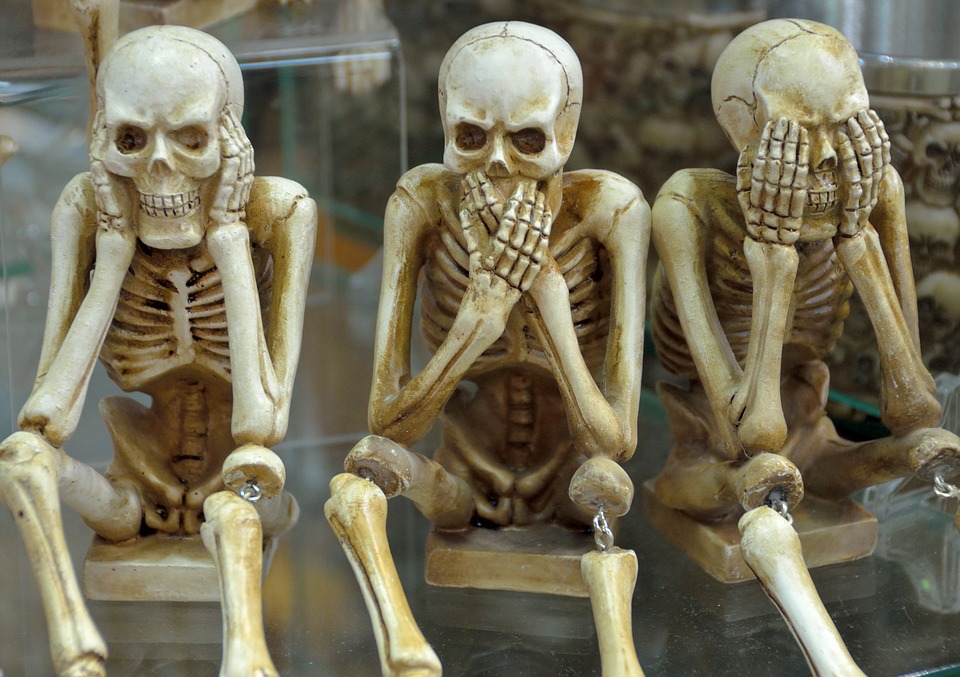Everyone, with no exception, has a skeleton and underneath it sits a complex but fascinating system of bones. If you are curious about your own body (or rather skeleton), read this article to learn more.
Bones of the Human Body
Did you know that the bone is one of the most complex and most versatile of all tissues? It serves as a framework, giving form to the body, protecting the vital organs and bearing weight and strain. It is also a sort of chemical laboratory, where red blood cells are manufactured and also like a storehouse for the vital mineral calcium, which is supplied to the blood as it is required.
A bone resists pressure and accepts strain. In other words, it is hard and yet flexible. It owes these properties to its composition. It is two-thirds mineral matter – predominantly calcium phosphate – and one-third animal matter – chiefly a gelatin-like and elastic substance known as collagen. Therefore, the hardness of the bone is due to its mineral matter while its flexibility is due to its animal matter.

Bones are like living structures like the other tissue of the human body. They can generally maintain themselves very efficiently and when they are fractured, they can mend themselves. Besides, they are generously supplied with blood for their nourishment.
Usually, during the early years in man, while a bone is still growing, it is not a single unit but is rather in three pieces. Each end or cap is separated from its long shaft by a plate of gristle or cartilage known as the growth plate. As long as this plate persists, the bone continues to grow and to get longer. As it develops, it often changes its shape and appearance. A simple example is how the thighbone of a child is different from that of an adult. However, during the growing stage, the cap is sometimes knocked off its shaft as a result of a fall or a hard blow and unless the cap is accurately restored, a serious deformity may result.
The outer surface of all bones is usually made up of a dense and ivory-like substance known as compact bone. It is interlaced with numerous small canals that provide passageways for the nerves and blood vessels that nourish it. Long bones consist entirely of a hollow shaft of compact bone, for instance, the central cavity is filled with a fatty tissue called bone marrow.
In some cases, there is an outer covering of compact bone and inside this outer covering, there is a porous, trellis-like structure called cancellous bone. The spaces left within cancellous bone are usually filled with bone marrow.
Now, in the ends of these long bones and scattered throughout the interior of flat bones and ribs, streaks of reddish material can be seen. If you wonder what they are, let me inform you that these are manufacturing centers for red blood cells, transporting oxygen to the tissues. If the bone marrow that contains these manufacturing centers is damaged, the production of the cells is inadequate and the sufferer becomes anemic. It is noted that lead and benzol are detrimental to bone marrow and that’s why workers who use these materials to a great extent are more likely to develop anemia. This condition may also result when a tumor of the bone marrow destroys some or all of the tissues that form red blood cells.

Can you believe that there are over two hundred bones in the human body, each with its own particular function? And these bones are divided into two main groups – axial and appendicular.
Axial bones receive and transmit weight and protect the body cavities and they consist of the skull, the backbone and the bones of the chest. On the other hand, the appendicular bones hang from the main or axial skeleton and the bones of the arms and legs are considered appendicular bones.
If you liked this article, then don’t forget to share your comments and come back for part 2, where we will learn more about axial bones!


